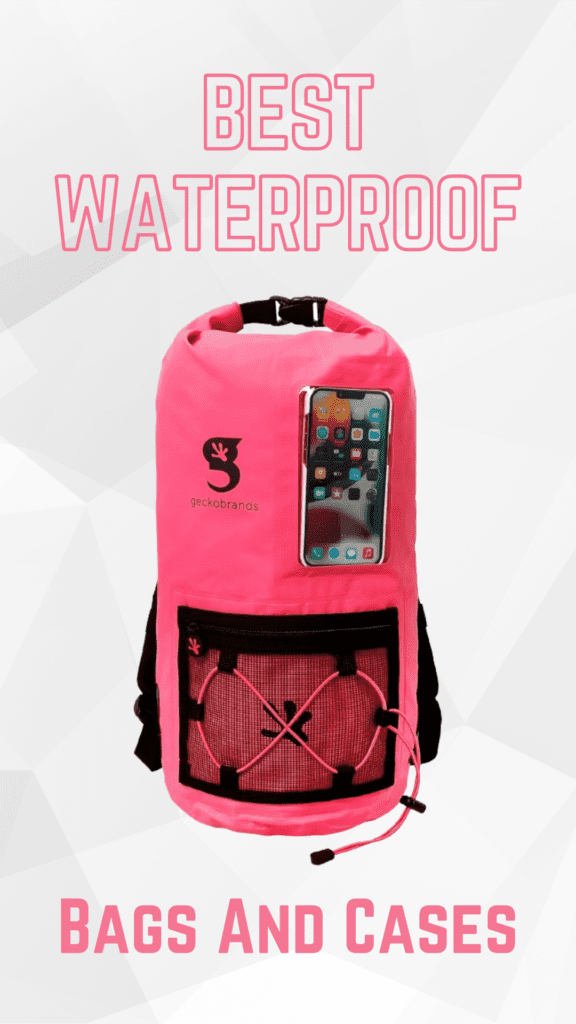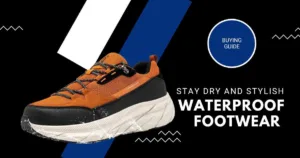Waterproof Bags and Cases for Electronics: Ultimate Protection Guide
Waterproof bags and cases for electronics offer protection and peace of mind in environments where water or moisture could otherwise damage your devices. A waterproof solution can keep your electronics safe when you’re outdoors, traveling, or simply navigating the unpredictability of daily life. Depending on their rating and design, these specialized bags and cases shield your gadgets from rain, spills, and even full submersion.
Selecting the right waterproof option requires consideration of the electronic devices you intend to protect. Whether it’s a smartphone, camera, or portable charger, the market presents a variety of choices to fit your specific needs. Dimensions, durability, and the level of waterproofing are critical factors to assess.
Furthermore, the convenience of a waterproof electronics bag isn’t limited to protection against water alone. Many products on the market offer additional features, such as organization compartments for cables and accessories, enhancing overall functionality. These organizational tools can prevent tangling and damage to cords and help you locate items quickly.
Understanding Waterproofing


When choosing bags and cases for your electronics, understanding the difference between waterproof and water-resistant options is crucial for safeguarding against water damage.
Waterproof vs. Water-Resistant
Waterproof products offer you the highest level of protection. They are designed to be completely impervious to water, meaning no water can penetrate the item under specific conditions. For instance, a waterproof phone case allows you to submerge your device underwater to a certain depth for a specified duration without any water ingress.
On the other hand, water-resistant items can only fend off water to a certain extent. They can handle splashes or light rain but cannot be submerged. Water-resistant might be sufficient if you’re looking for something that can withstand brief encounters with water. However, for full submersion protection, only waterproof solutions can ensure your electronics stay dry.
The Importance of Waterproofing Electronics
Waterproofing your electronics is essential because it provides a barrier against water damage. Electronics and water do not mix – moisture can corrode circuits, short components, and, ultimately, ruin your devices. By selecting waterproof bags and cases, you’re investing in the longevity of your electronics and avoiding potential loss of data and functionality. It’s more than just preventing damage; it’s about maintaining the operational integrity of your technology in all conditions.
Types of Waterproof Cases and Bags


When protecting your electronics from water, it’s critical to choose the right kind of protection. Each type of waterproof case or bag is designed with specific devices in mind and offers varying degrees of accessibility and security against moisture.
Waterproof Phone Cases
Your phone is an essential device that you likely carry everywhere. Waterproof phone cases protect your phone without sacrificing touchscreen functionality. Some, like the Pelican Marine series, offer added drop protection, too.
Waterproof Dry Bags
Dry bags are a versatile option for a range of electronics. From small pouches to large sacks, brands like Earth Pack provide roll-top closure systems, ensuring your gear stays dry during aquatic adventures. They’re ideal for items that don’t need frequent access but require a safe, dry environment.
Waterproof Camera Cases
For photographers, waterproof camera cases are indispensable. These cases not only shield your camera from water but also from dust, dirt, and sand. Dedicated camera dry bags with padded interiors help cushion your camera against bumps and drops during transit.
Waterproof Laptop Cases
Waterproof laptop cases are your best bet for moisture protection if you’re traveling with a laptop. With options like watertight seals and impact-resistant exteriors, these cases ensure that your laptop can withstand harsh conditions without damage.
Waterproof Pouches and Waist Packs
For smaller items or for those who need quick access to their belongings, waterproof pouches and waist packs are practical solutions. The Nite Ize RunOff Waterproof Phone Pouch is a popular choice for its slim design and touchscreen accessibility, while waist packs offer convenience and portability for on-the-go activities.
Key Features to Consider


When choosing waterproof bags and cases for your electronics, it’s crucial to focus on features that safeguard your devices and enhance functionality. Here’s a breakdown of key aspects you should consider.
Material and Durability
The material of a waterproof bag or case is essential for ensuring long-term durability. Look for products made from tough, puncture-resistant materials like PVC or TPU. High-frequency welded seams are a marker of quality waterproof bags, providing enhanced protection against leaks.
Size and Capacity
Size and capacity are important to ensure your electronics fit snugly and are protected. Check the specifications for dimensions and volume, usually measured in liters (L), to confirm whether they align with your storage needs. A product with a 16L capacity is sufficient for everyday carry items.
Seal and Closure Mechanism
A reliable seal and closure mechanism is what keeps water out. Look for bags with Watertight zippers or roll-top closures that provide an impenetrable seal. An effective closure should be both easy to use and secure enough to withstand submersion.
Portability and Ease of Use
Consider how easy it is to carry the bag. Portability features such as padded straps, handles, and lightweight design are significant, especially for outdoor use. Easy access to your devices through smart compartmentalization can be a bonus for convenience.
Brand and Price
Lastly, brand reputation and price often reflect the quality you can expect. Trusted outdoor brands tend to offer reliable waterproofing and durability. Compare prices of similar waterproof electronics bags to find one that offers the best value for money depending on its features and warranties.
Best Practices for Protecting Electronics


Protecting your electronics like smartphones, cameras, and laptops is essential when adventuring outdoors or near water. By using the proper sealing methods and maintenance, you can prevent unnecessary damage to your gadgets.
Sealing and Testing
For Smartphones, Tablets, and GPS Devices:
- Seal them in waterproof cases or bags specifically designed for electronics. Ensure the closure system, typically a zip-seal or fold-over snap, is defects-free.
- Test the seal by submerging the case in water without your device inside. Look for bubbles or moisture that may indicate a leak.
For Cameras and Larger Electronics:
- Use a dry bag with a secure roll-top closure to ensure a watertight seal. Check the bag’s specifications for depth limitations and avoid exceeding them.
- Camera-specific cases should be pressure-tested before use if they are designed for underwater photography.
Care and Maintenance
- After exposure to water, rinse the waterproof cases and bags with fresh water, especially if they have been in contact with salt water or chlorinated pools.
- Dry thoroughly before storing and inspect for any signs of wear and tear, such as cracks or degraded seals, that could affect their watertight integrity.
- When not in use, store your waterproof bags and cases in a cool, dry place to prevent material degradation.
Packing Tips
- Pack light: Overstuffing waterproof bags can stress the seals and lead to failure.
- Balance your bag: Distribute heavier items like laptops evenly to avoid pressure points against the waterproof barrier.
- Use dedicated slots or padded sections for additional protection if your bag or case has them.
- Label your bags: If using multiple bags or cases, label them to quickly identify the contents without having to open and reseal them multiple times.
Activity-Specific Recommendations


Choosing the right waterproof protection for your electronics depends on the activity you’re engaging in. Each outdoor pursuit has its own set of challenges, so select a product that addresses the specific demands and environmental conditions you’ll encounter.
For Hiking and Camping
When you’re hiking and camping, durability and weight are key considerations. A lightweight waterproof phone pouch is essential for protecting your devices from rain and accidental drops into puddles or streams. For larger electronics or multiple items, consider a waterproof electronics bag with padded compartments that can be easily stowed in your backpack.
- Phone Protection: Opt for a pouch with a clear, touch-sensitive front for easy GPS navigation.
- Electronics Bags: Select a bag that’s both waterproof and dustproof with adjustable dividers for custom organization.
For Kayaking and Water Sports
In environments where your electronics could be submerged, like kayaking and water sports, a secure and floatable case is non-negotiable. Look for cases specifically designed for water exposure, such as the Nite Ize RunOff Waterproof Phone Case, which offers a watertight seal and maintains the functionality of your touchscreen and camera.
- Submersion Protection: Verify that the case you choose has an IPX8 rating, indicating it can withstand submersion.
- Floatability: Ensure the case can float, so if it goes overboard, it doesn’t sink out of reach.
For Poolside and Beach Use
At the pool or beach, sand and prolonged exposure to water are your electronics’ main threats. A sealable waterproof bag can protect your gadgets from splashes and keep out fine particles. These bags should have a clear panel to allow you to use your device without removing it from the case protection.
- Sealable Bags: Choose a bag with a secure, easy-to-use closure to keep out sand and moisture.
- Ease of Use: Make sure you can operate your device through the bag, especially if you plan to read or change music tracks.
Top Picks for Waterproof Solutions


When you’re in the market for waterproof protection for your electronics, certain products stand out for their reliability and design. Below are top selections that ensure your devices stay dry and secure in wet conditions.
Phone Cases:
- LifeProof FRĒ Series: This case offers comprehensive protection for your phone, not only from water but also from dust and falls. Designed for a variety of phone models, its durability makes it a top pick.
- The Nite Ize RunOff Waterproof Phone Case protects against water ingress with its unique TRU Zip zipper, ensuring no moisture gets to your device, whether you’re caught in a rainstorm or kayaking on a river.
Pouches:
- For a budget-friendly yet reliable option, consider the JOTO Universal Waterproof Phone Pouch. Its clear window allows for touchscreen use while safeguarding your phone up to 100 feet underwater.
- The Mpow 097 Universal Waterproof Case is a popular choice for water sports enthusiasts, offering both protection and functionality at a depth of up to 100 feet for various smartphones.
Multipurpose Cases:
- Pelican cases are synonymous with rugged protection. From small cases for your phone to large containers for camera equipment, Pelican’s offerings are engineered to withstand the most challenging conditions. Their watertight seals and crushproof exteriors make them invaluable for adventure seekers.
- For smaller items, the Nite Ize RunOff Waterproof Pouch is an excellent choice. It protects essentials like passports, wallets, and keys, and features the same TRU Zip technology for a watertight seal.
Choose based on your specific needs—whether it’s a slim phone case for everyday use or a sturdy pouch for outdoor activities. Remember, the right product will offer peace of mind, knowing your electronics are sheltered from the elements.
Safety Tips and Limitations


When selecting and using waterproof bags and cases for your electronics, it’s crucial to follow safety tips and understand their limitations to ensure maximum protection.
- Check the IP Rating: Make sure your waterproof case has an adequate Ingress Protection (IP) rating. The higher the number, the better it is at keeping out water, dust, and dirt.
Seal Check: Before exposing to water, always check the seals for any signs of damage or debris that could compromise the waterproofing.
Avoid Extremes: Don’t expose your electronics in their cases to extreme temperatures or conditions that could test the limits of the waterproofing materials.
- Regular Testing: Regularly test the case without your device inside by submerging it in water to look for leaks.
Submersion Time and Depth: Take note of the maximum submersion time and depth recommended by the manufacturer and avoid exceeding these limits.
- Handling After Exposure: After exposure to water, carefully dry off the exterior of the case before opening it
to prevent water from dripping onto your device.
| Care Instructions | Tips |
|---|---|
| After Contact with Water | Thoroughly rinse cases with fresh water after exposure to chlorine, saltwater, or other minerals. |
| Post Exposure Handling | Dry with a soft cloth before opening. |
| Storage | Store in a cool, dry place to prevent seal deterioration. |
Remember that waterproof does not mean indestructible; your device can still be damaged by impact or incorrect handling. It’s also wise to not solely rely on the case or bag—be mindful of how you use your electronics around water, dust, and dirt to avoid accidental damage.
Frequently Asked Questions
How can I test the effectiveness of a waterproof bag or case for electronics?
To test the effectiveness, first inspect the bag or case for any visible defects. Next, you can perform a simple test by sealing a dry paper towel inside and submerging the case in water for a few minutes. If the towel remains dry, the case is likely effective at waterproofing.
What materials are typically used to manufacture waterproof cases for electronic devices?
Waterproof cases are often made from materials like PVC, TPU, or neoprene. These substances are renowned for their water-resistant properties and ability to form tight seals.
What features should I look for in a high-quality waterproof pouch for my electronics?
When selecting a waterproof pouch, look for features such as a roll-top closure, welded seams, and a clear window for screen access. Additionally, a pouch should have a secure locking mechanism to prevent water from entering.
How do waterproof phone pouches ensure a secure seal against water intrusion?
Waterproof phone pouches usually use a locking clasp system which, when properly closed, creates a tight seal that prevents water from entering. Some pouches also implement magnetic or pressure-based closures to enhance the seal.
Can I operate my electronics while they are inside a waterproof case, and how accessible are they?
Yes, many waterproof cases are designed with touch-sensitive material that allows you to operate your device while it’s protected. The accessibility of buttons and screens often depends on the design of the case.
What are the advantages of using a waterproof bag over a water-resistant backpack for my electronic gear?
A waterproof bag provides a higher level of protection against full submersion compared to a water-resistant backpack, making it ideal for activities near or on the water. Water-resistant backpacks may repel water to some degree but are not designed to withstand being submerged.









